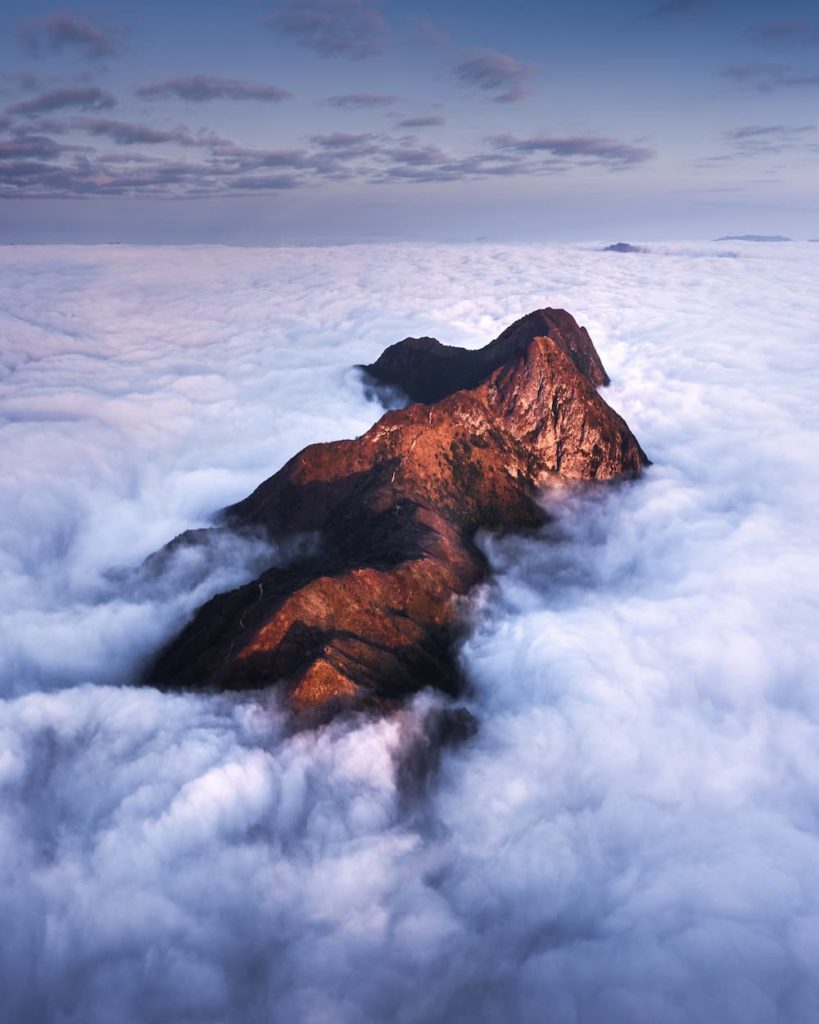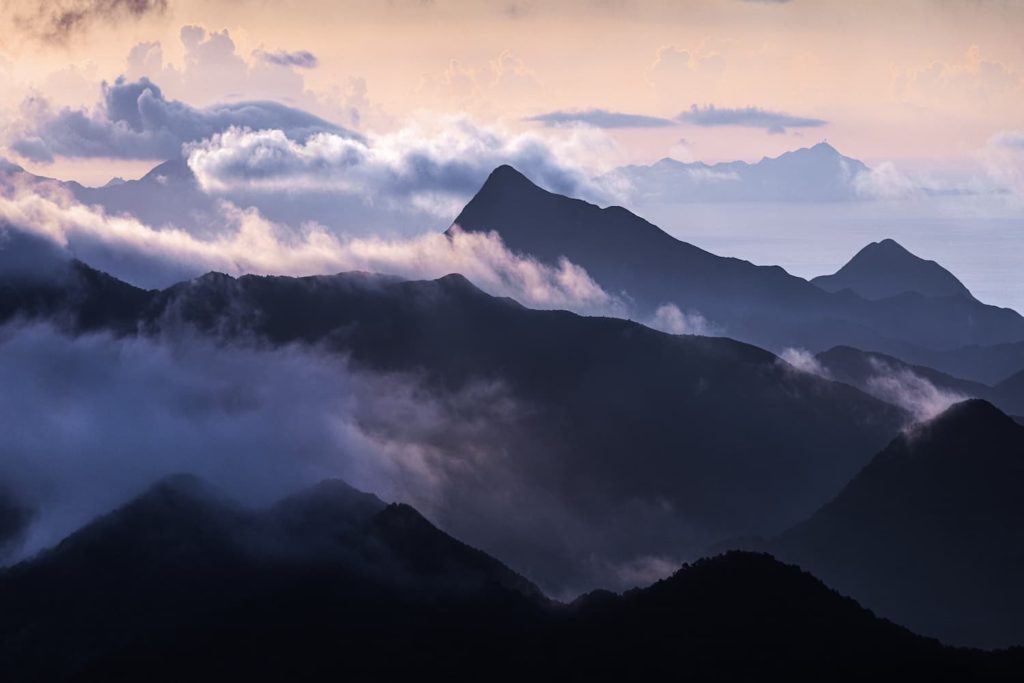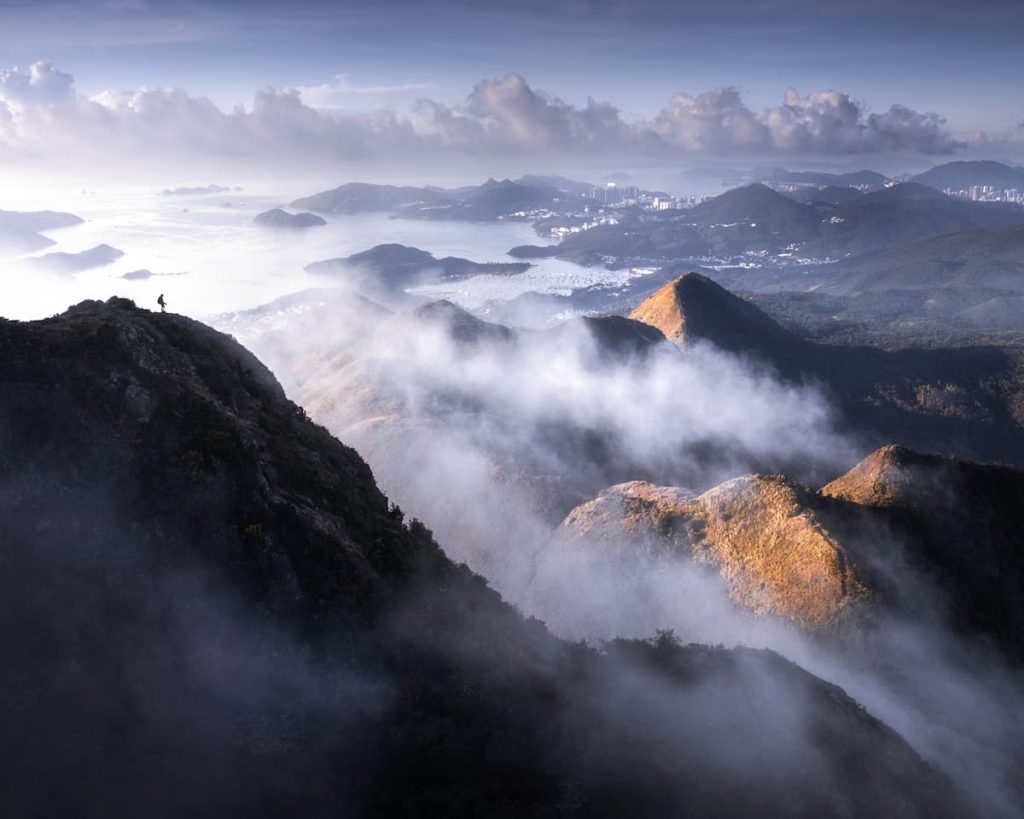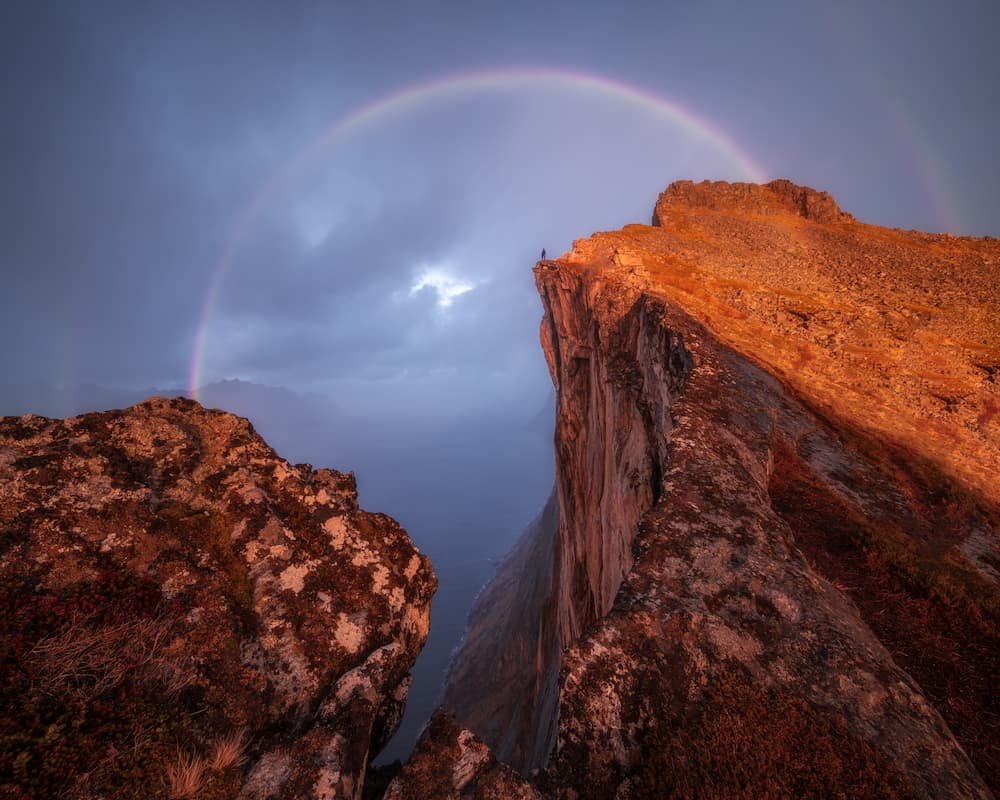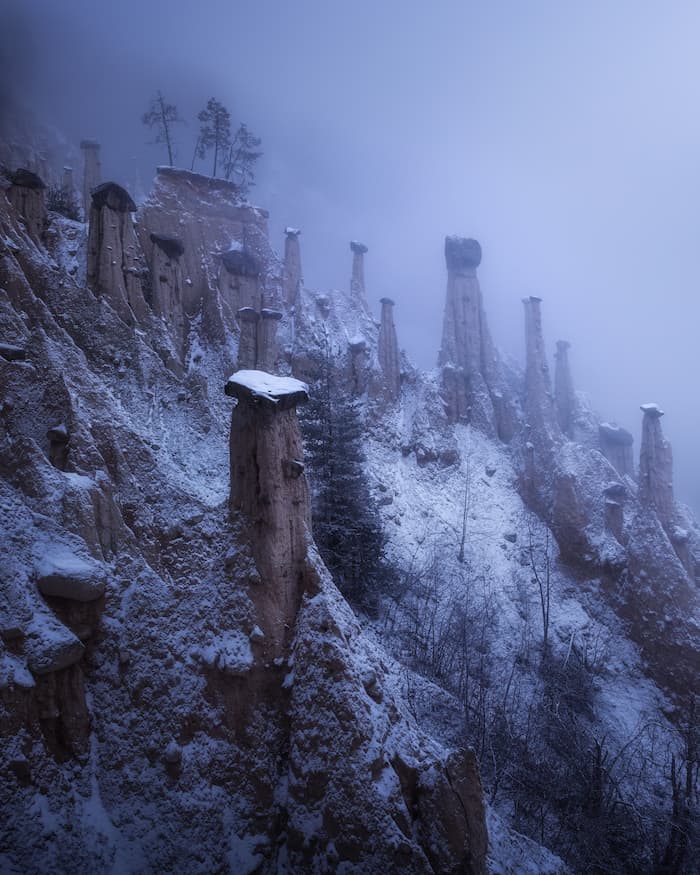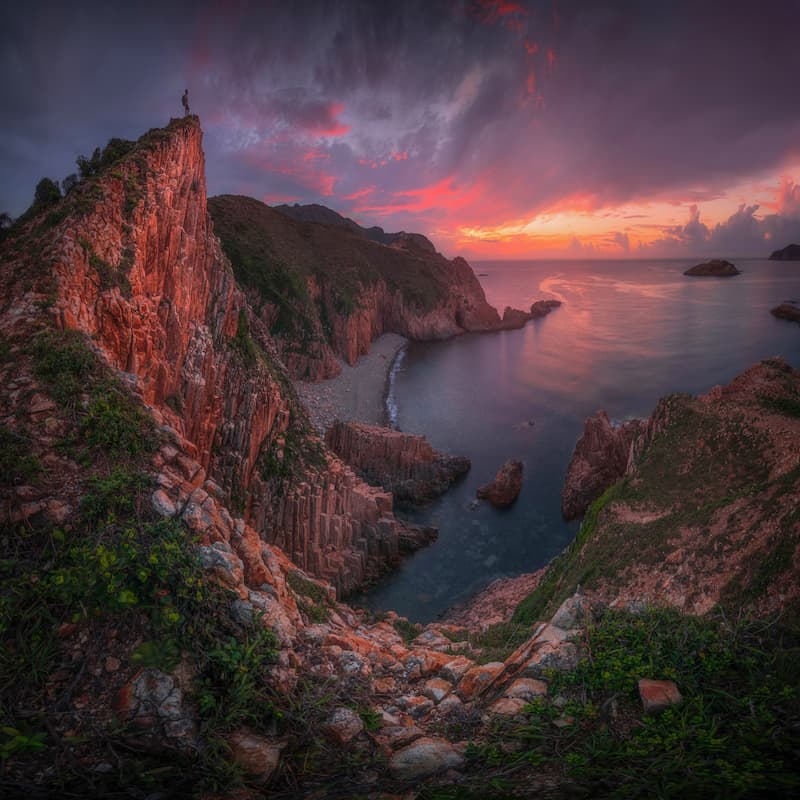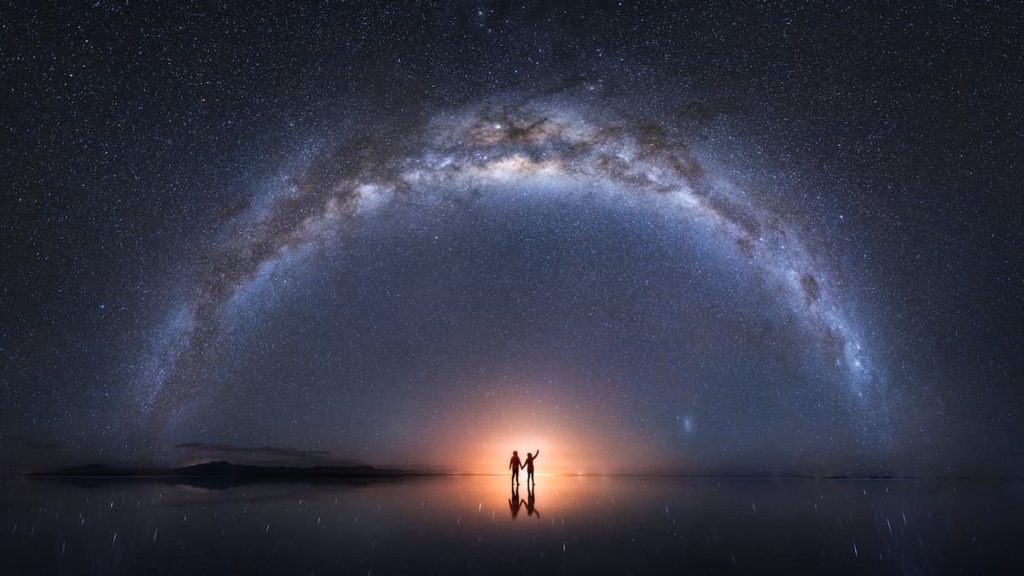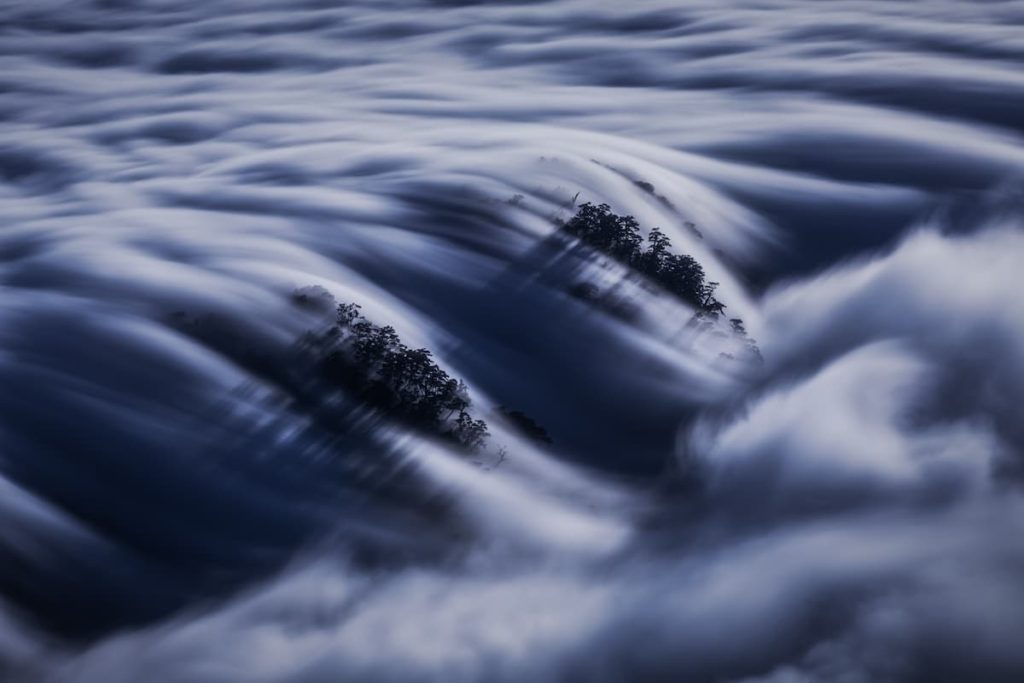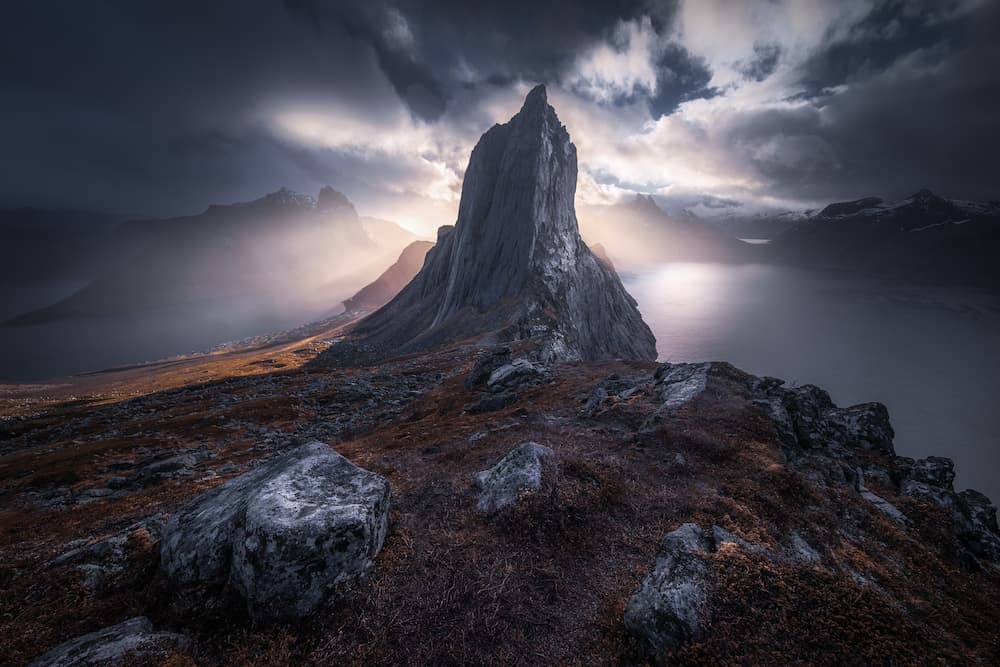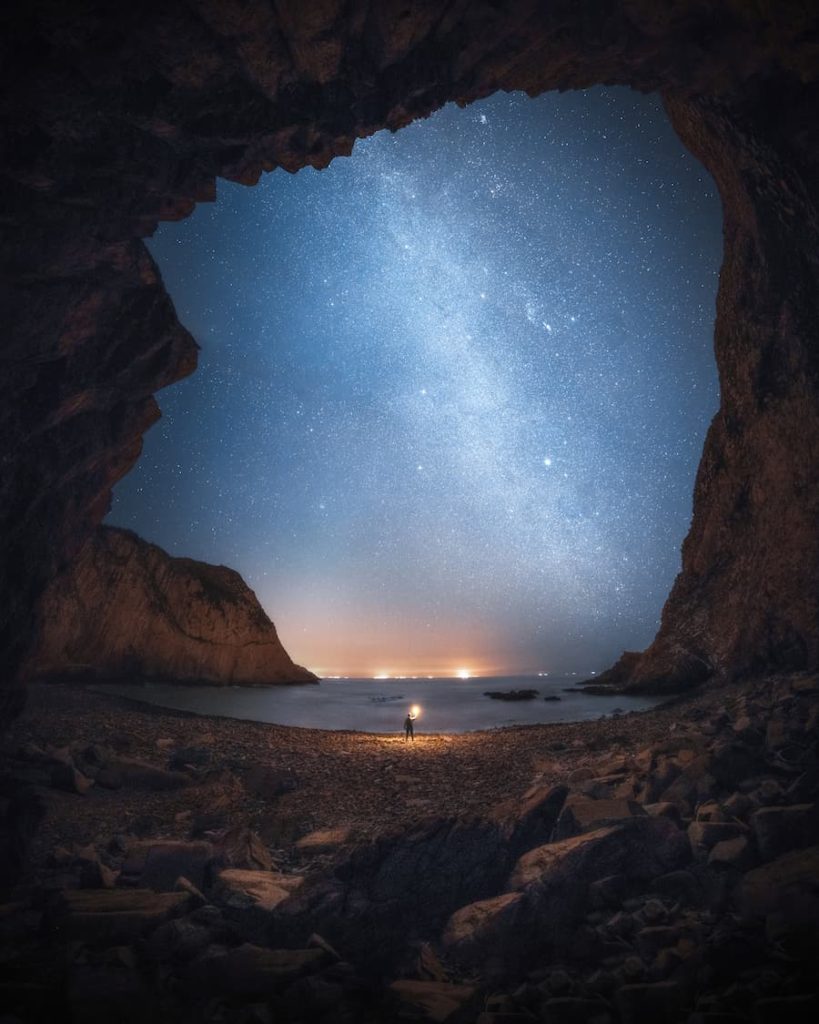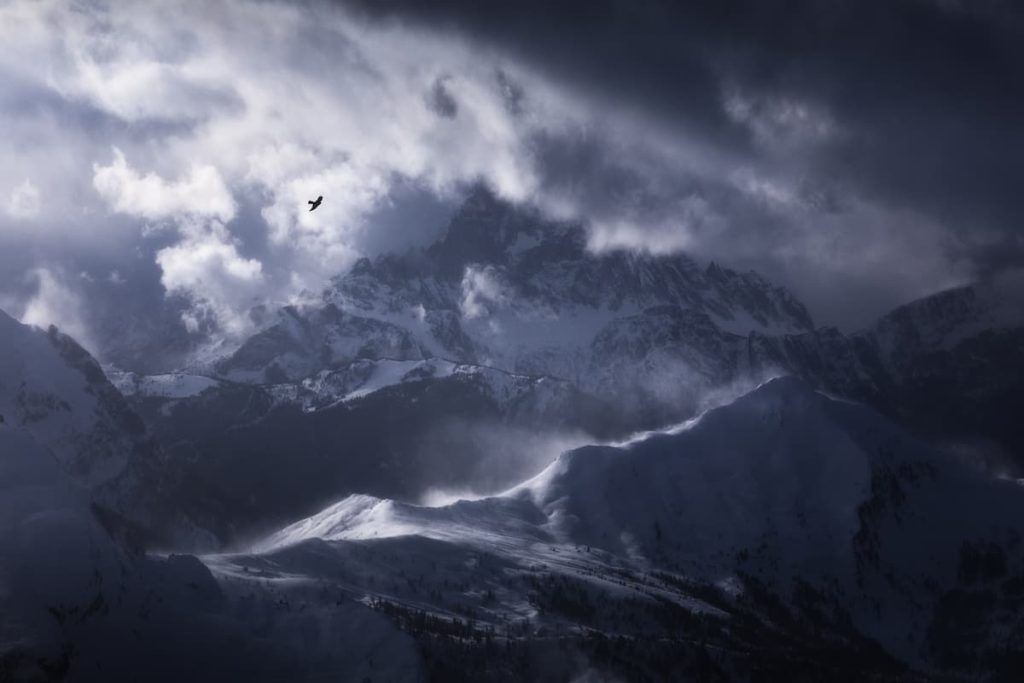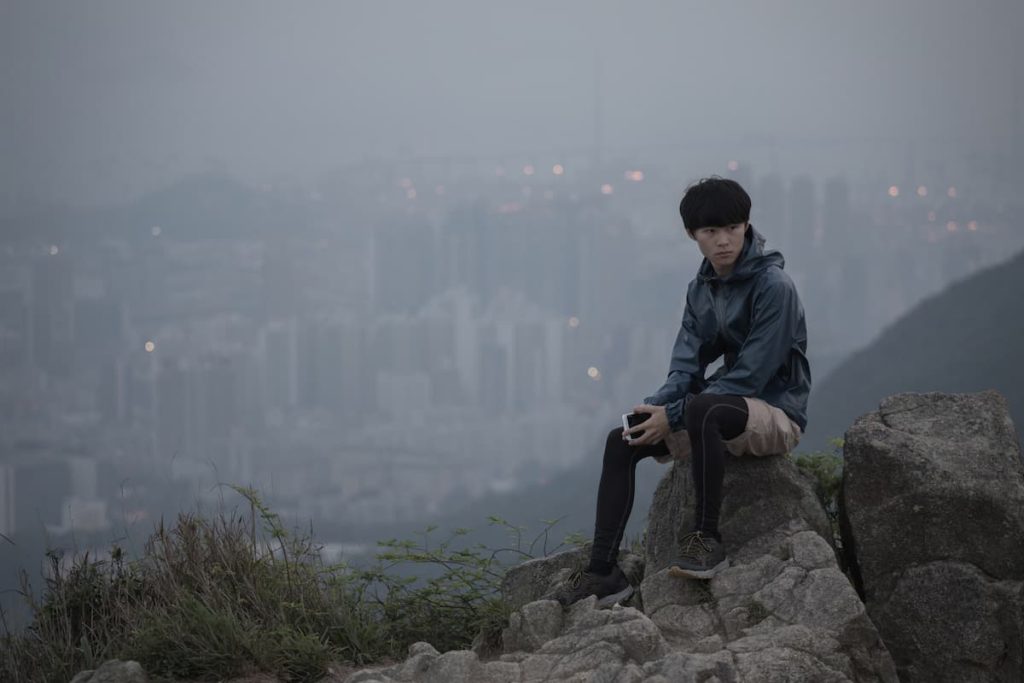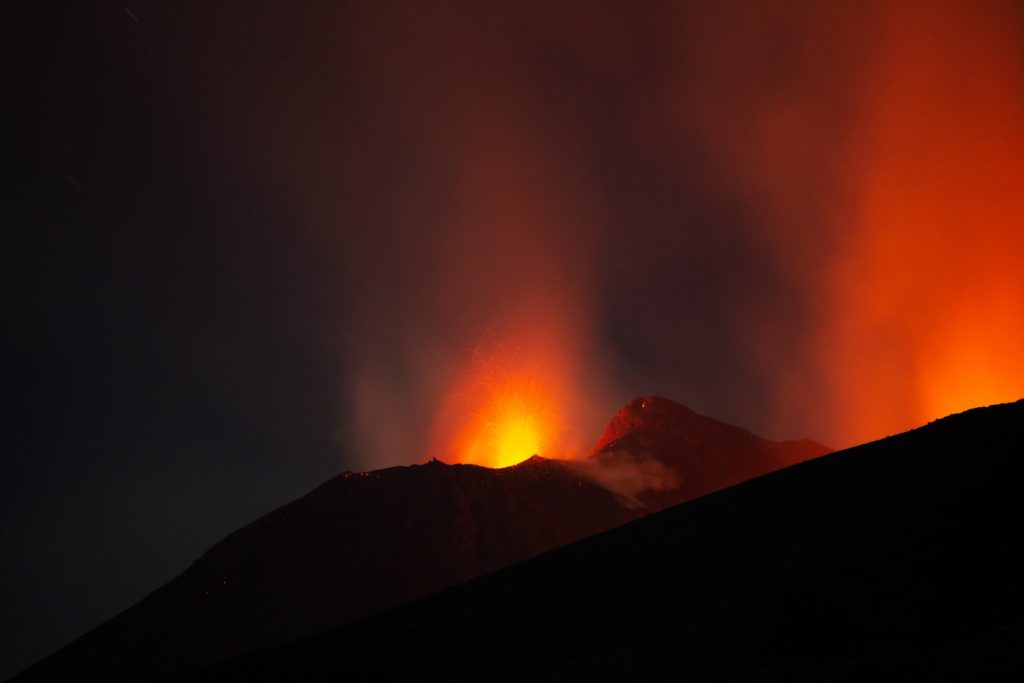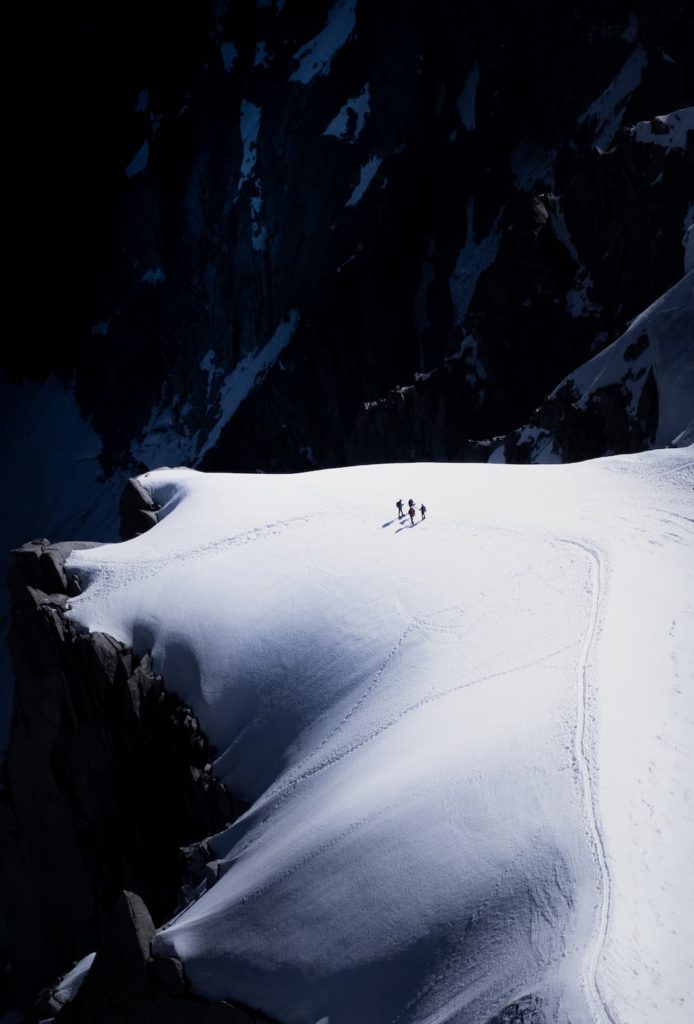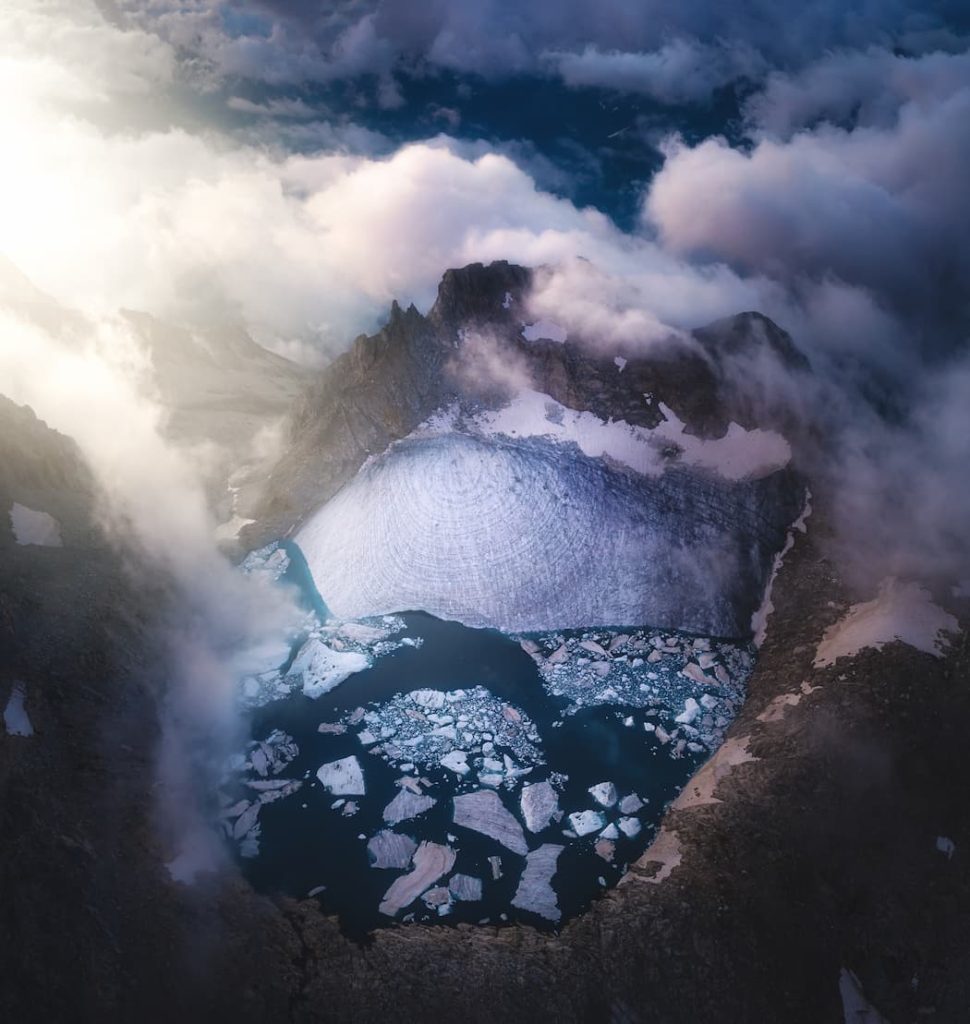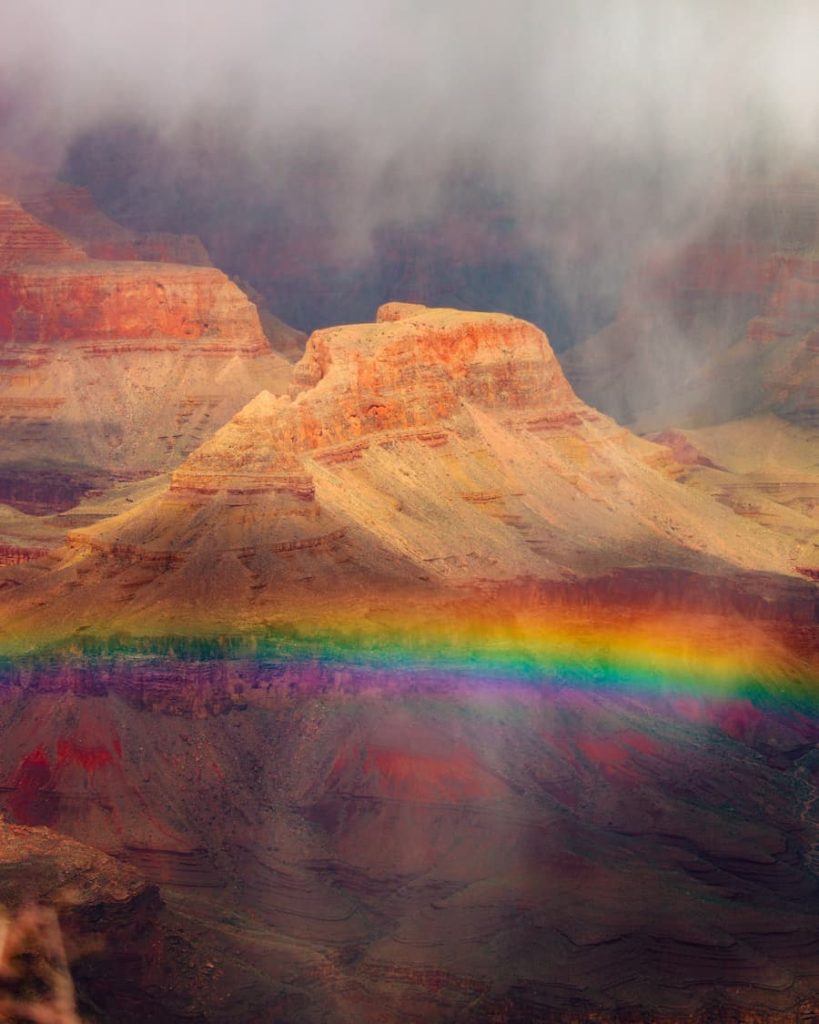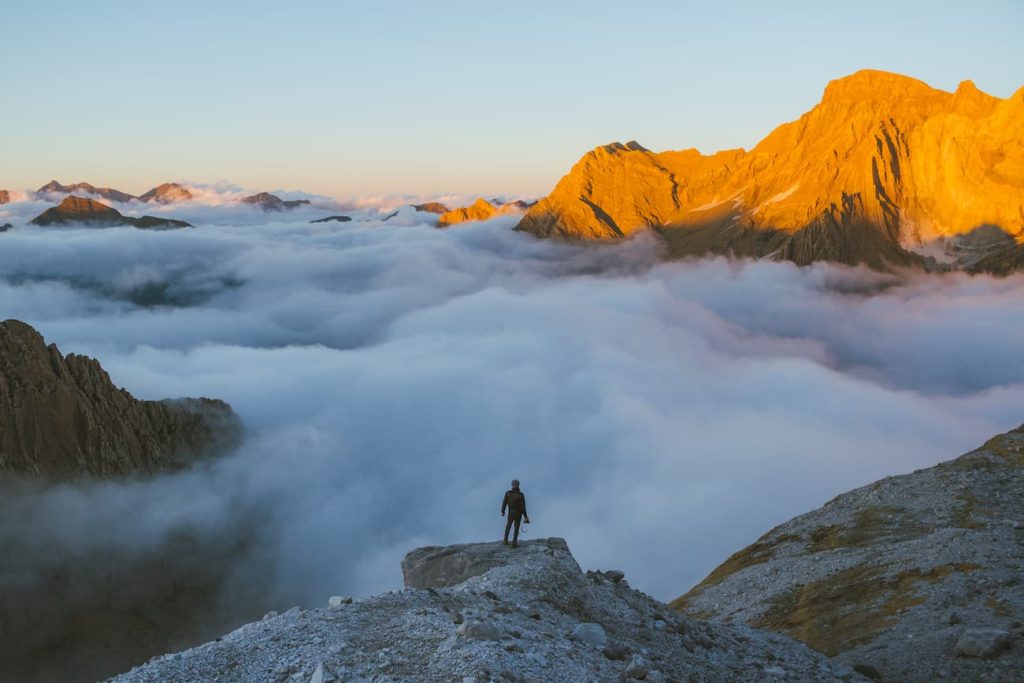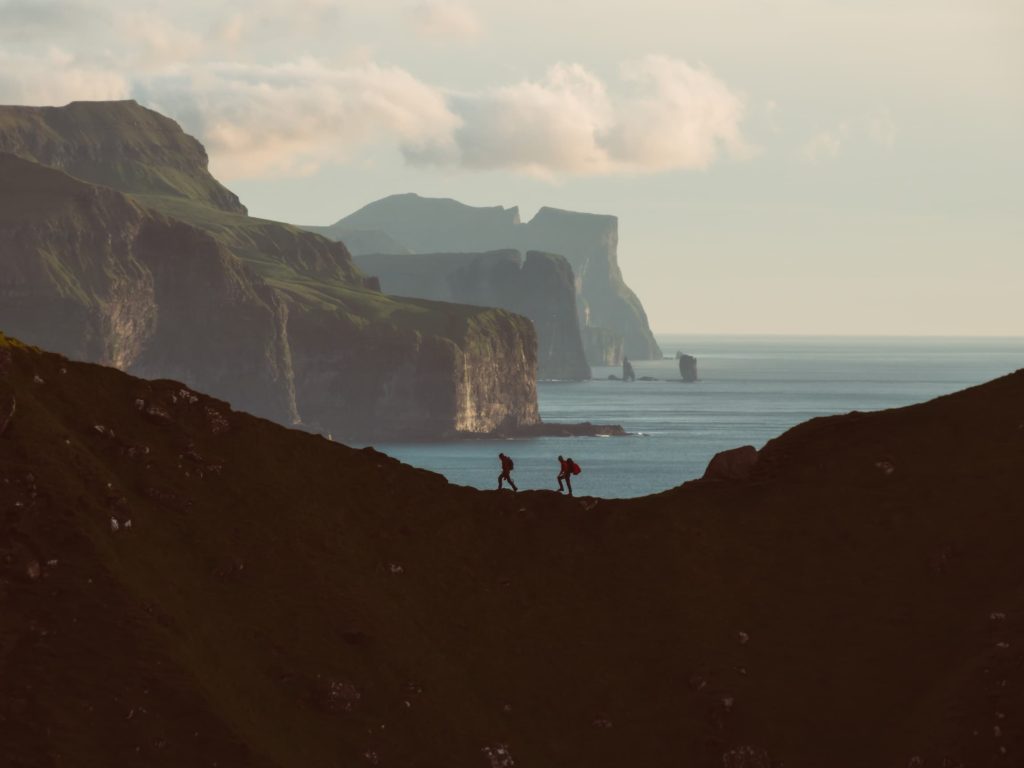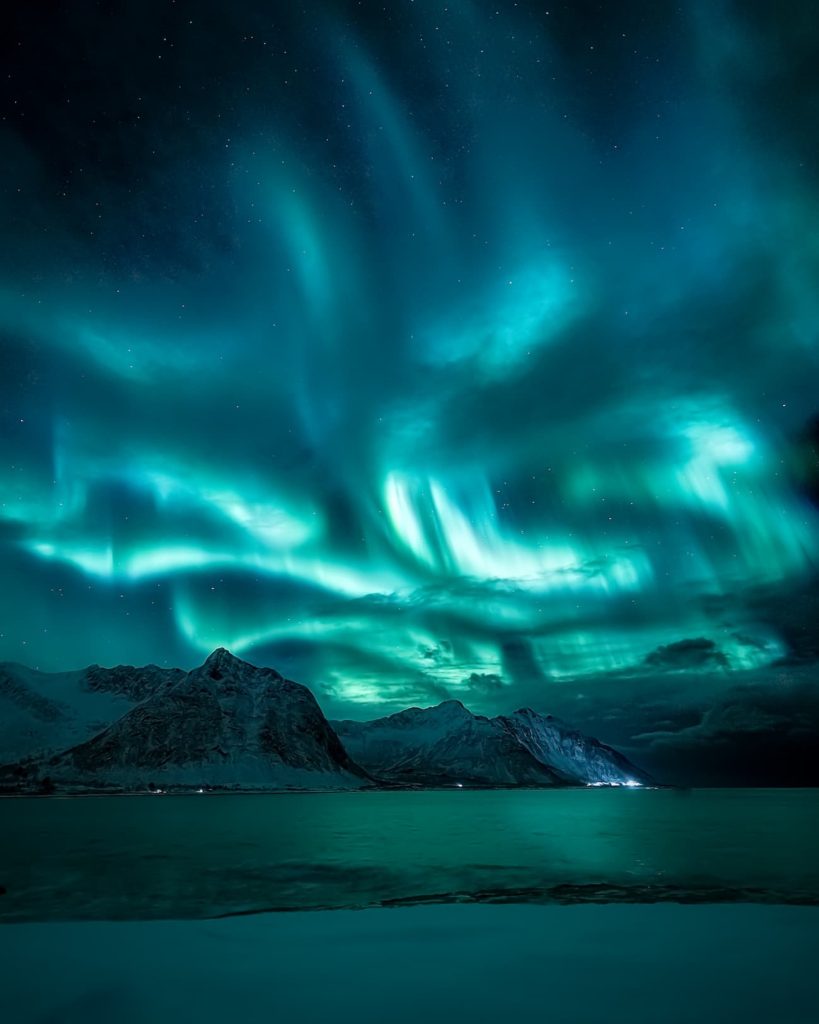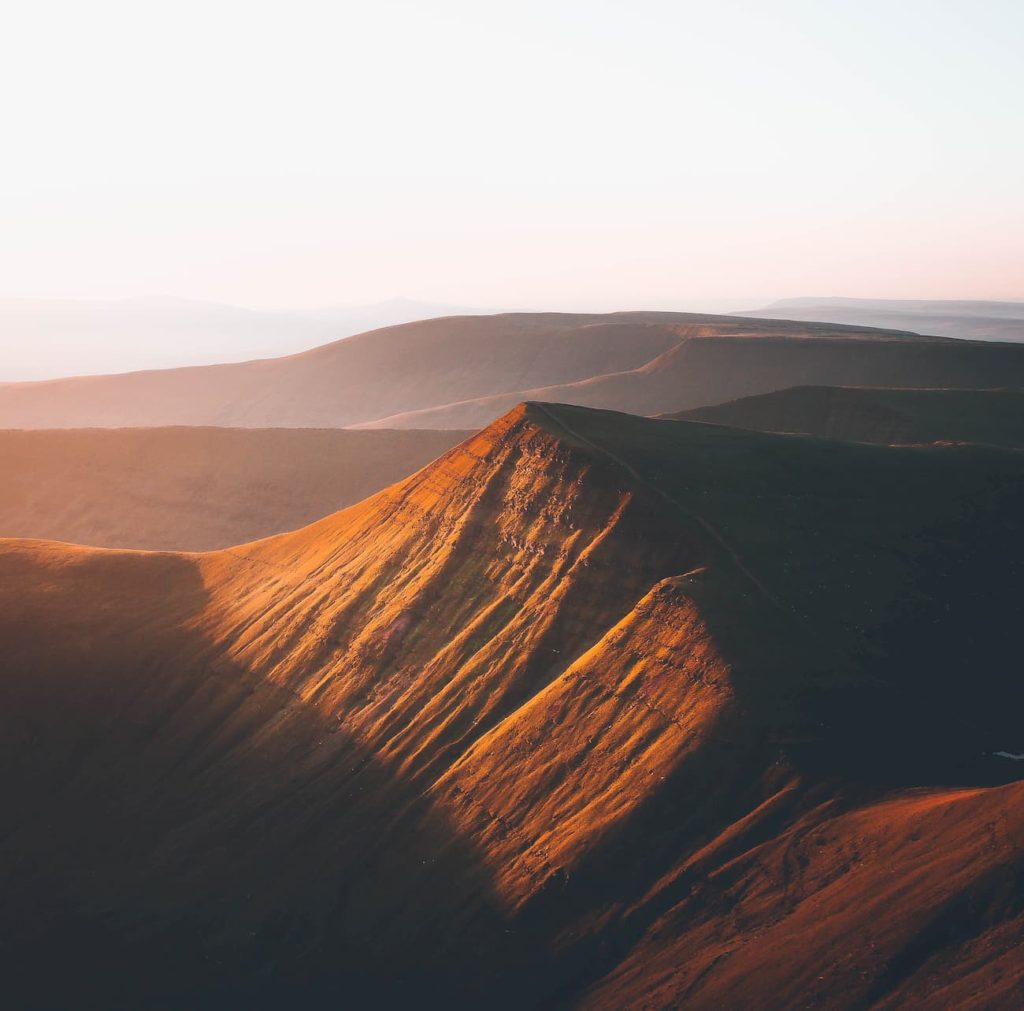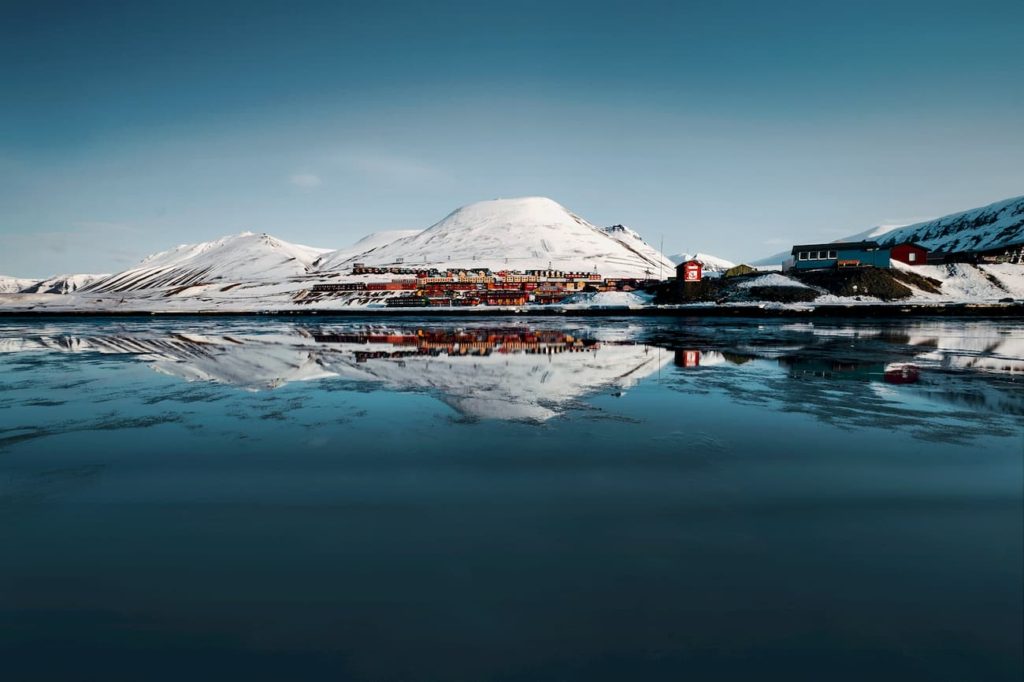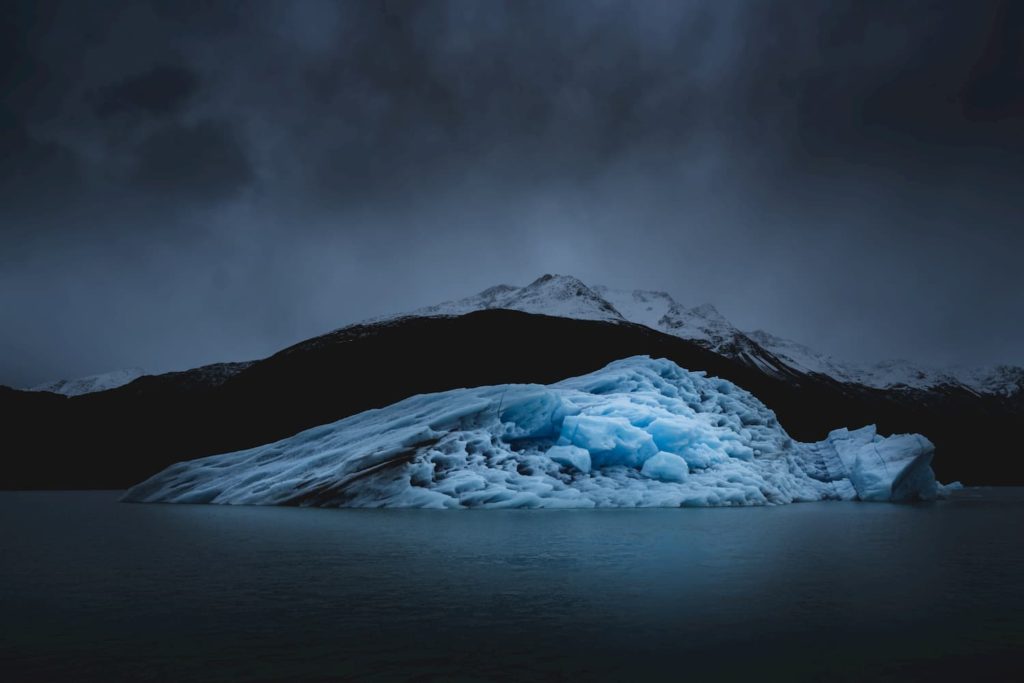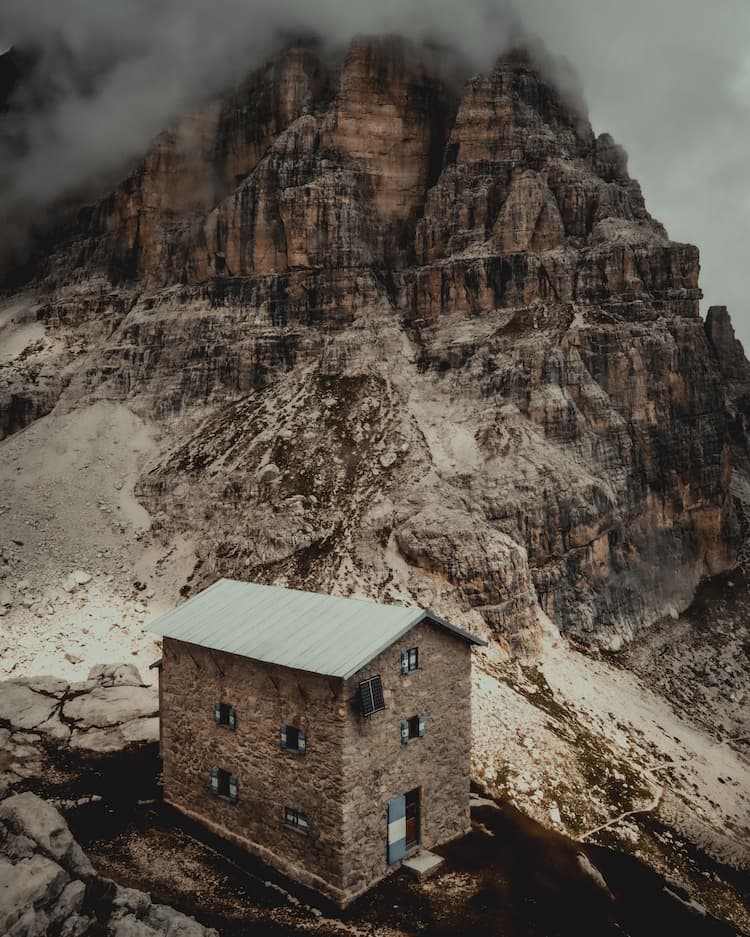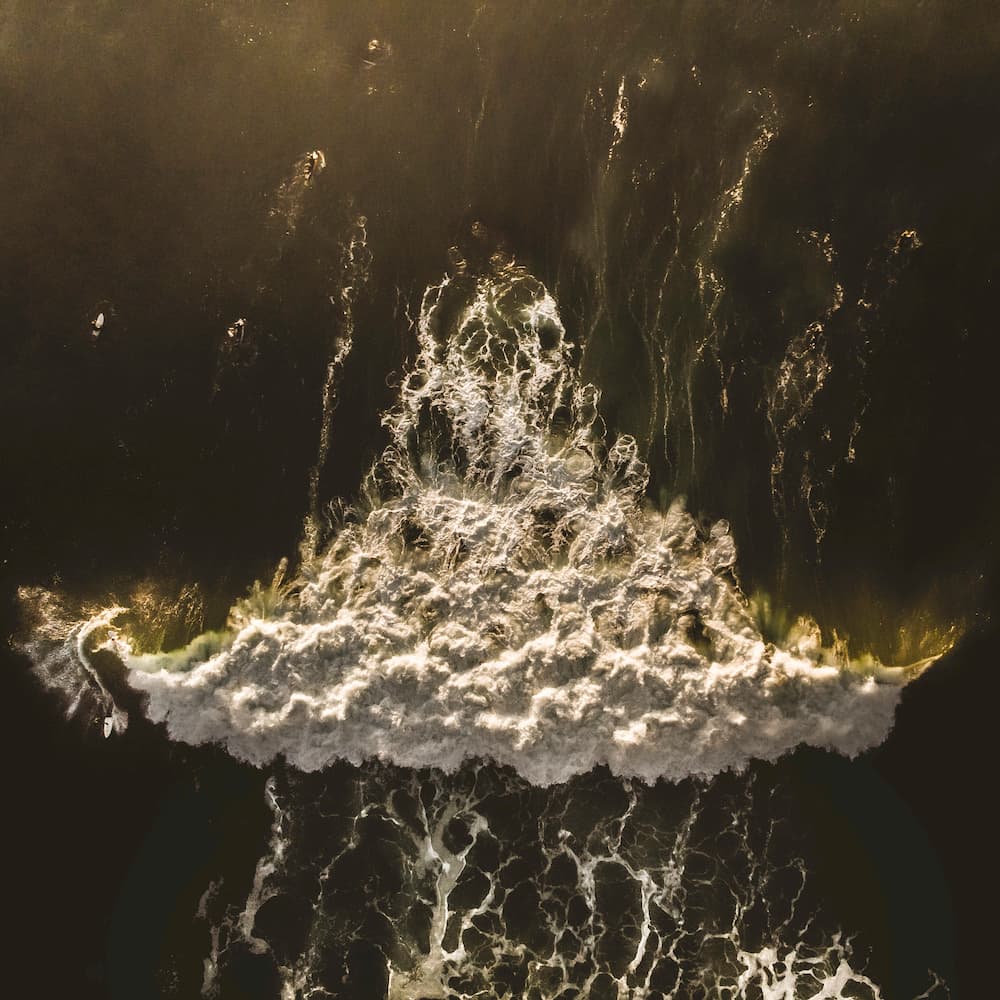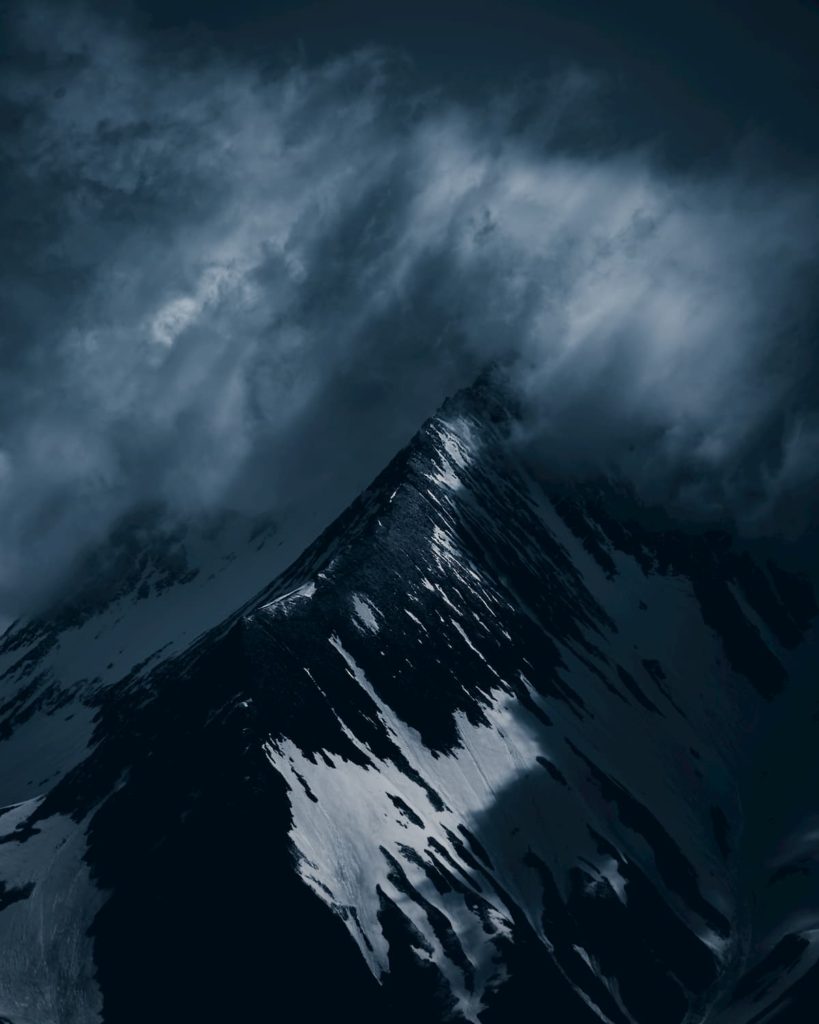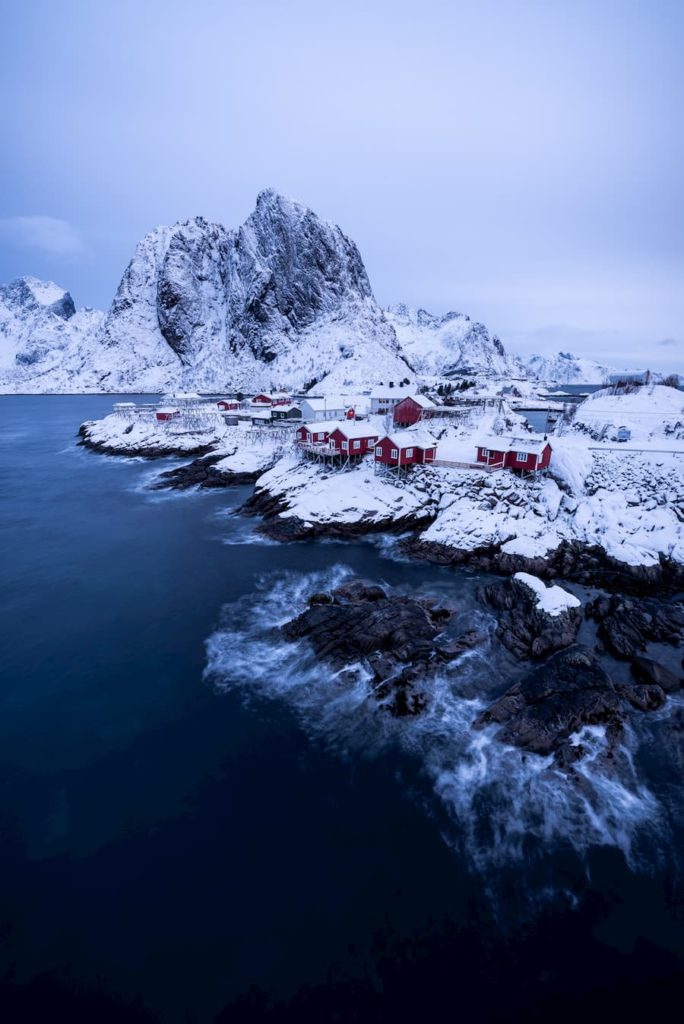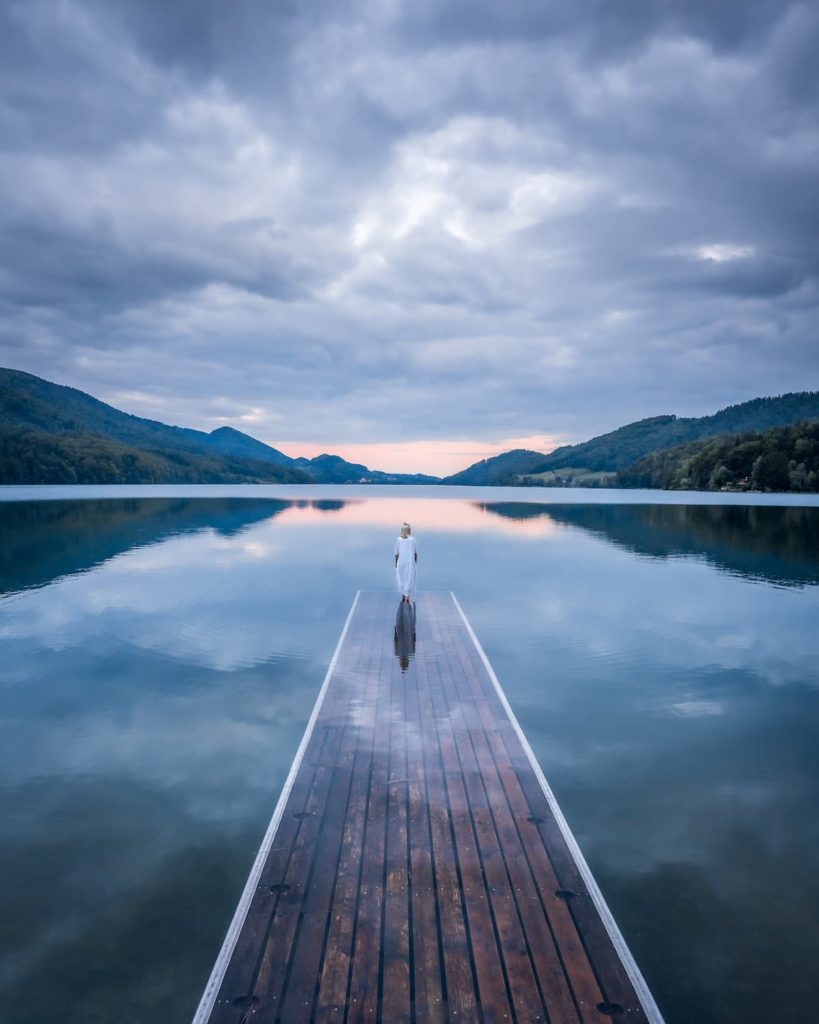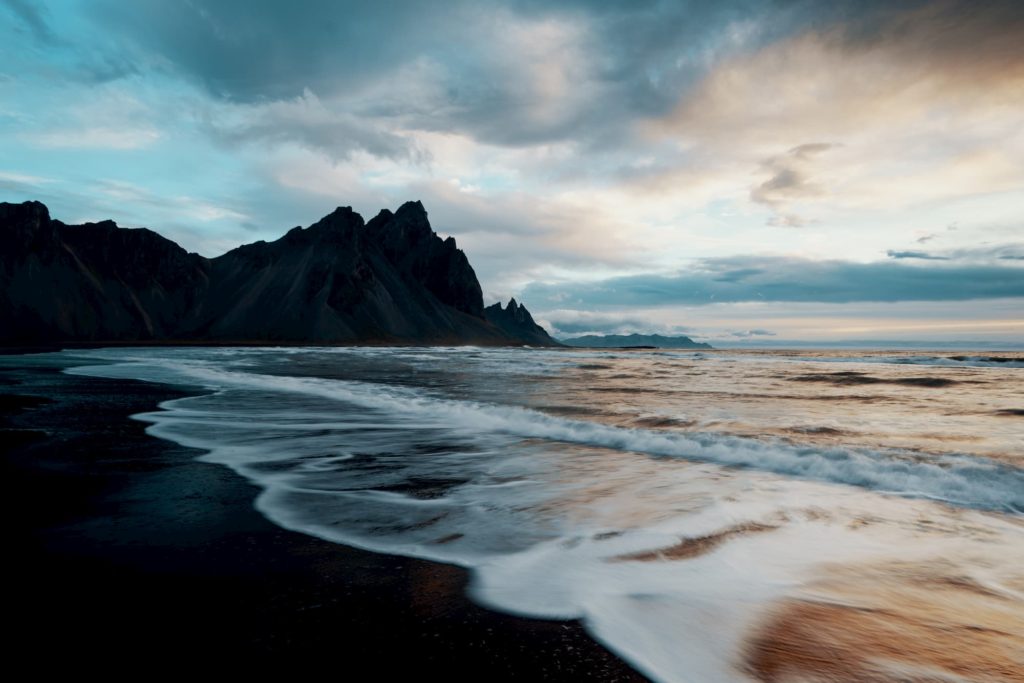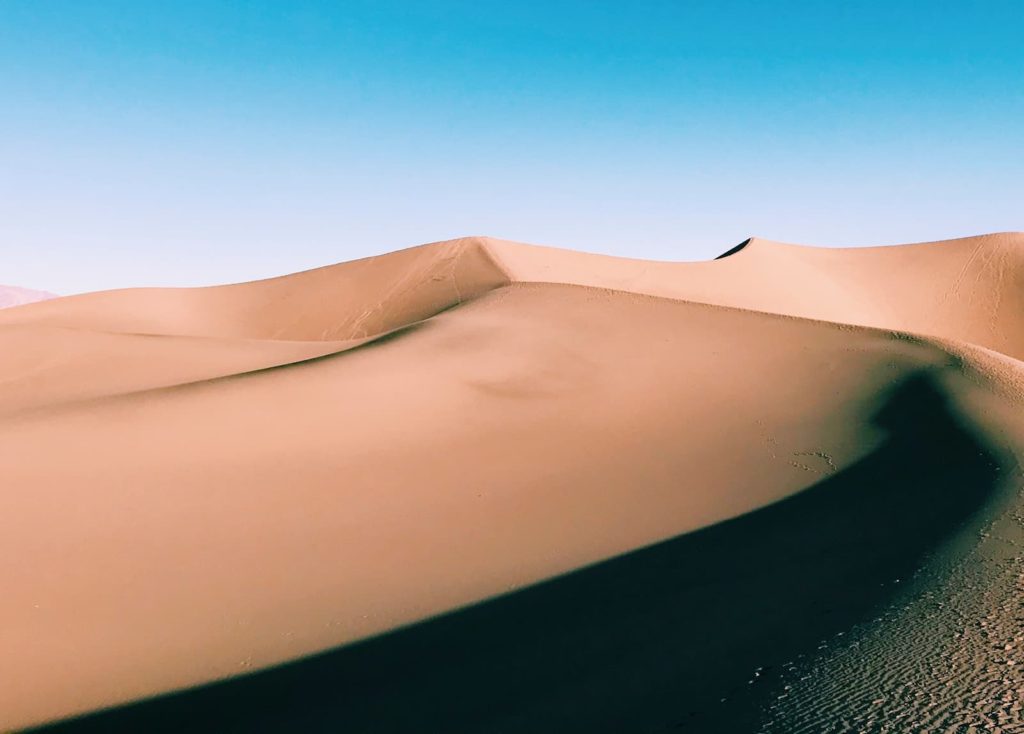
Kelvin Yuen
@kelvin_yuen_
Photographer based in Hong Kong
Kelvin takes us to Hong Kong with his photography, where his passion for the craft – and nature – began. We learn how shooting in other countries presented him with new photography challenges and how he honed his (technical) skills further while rediscovering the natural side of Hong Kong.
I love traveling because it offers a lot of unexpected situations that make me feel life is full of possibilities. Photography and traveling make me explore myself, it makes me realize I can be more than I could ever imagine. Also, when I travel, I encounter a lot of unexpected situations and obstacles to overcome. And when I succeed and obtain the ideal composition/photo that I had planned, I just feel awesome. I love to set a goal for myself and crash on it.
"The moment that sparked my passion both for nature and photography was the day I saw a sea of clouds for the first time in my whole life."
I was on a random hiking trip with a friend and I couldn’t believe what I saw at that moment. The cloud became colorful because of the light from the city, and it kept on changing shape right in front of me. Although I had a camera, I did not know how to operate it so I missed the chance to capture that amazing moment. But maybe that wasn’t too bad after all – because instead, I contemplated the spectacle and I connected with nature. I realized this was something that really touched my soul, and that I would like to share that feeling with my friends. Nature had impressed enough to want to “become” a landscape photographer.
"The very first photography goal was to capture that sea of clouds again, in a proper manner. It took me a few years, but I made it."
"In 2018, after I graduated from university, I started to travel around the world as a full-time landscape photographer."
I practiced a lot and learned a lot during my overseas shooting trip, especially about those shooting conditions/compositions that cannot be found in Hong Kong. From 2020, I started to apply those skills that I learned in the past few years to the scenes of Hong Kong. I re-explored and created some new compositions in my favorite place – Hong Kong UNESCO Global Geopark. As long as the shooting condition is suitable for my ideal image, I will get that photo I’m blown away by no matter if I have to stay overnight on a remote island or in a storm.
"In my photography, I focus on the atmosphere and the mood of my work."
I want to convey a vision that once my audience looks at my work, they will not just be astonished, but also persuaded to go to that place themselves. I want to make my audience have a surreal feeling while they trust that the illustrated scenes can truly be found somewhere on this beautiful planet. I feel satisfied every time I manage to achieve this.
Before 2020, my goal was to travel as much as I possibly could. As long as I keep on traveling, I can create new works, I thought. When the pandemic hit the world, I started to think about how I could use the skills that I developed in the past few years in a different way, and how I could improve to prepare for future photography trips. As a result, I started to focus on shooting with three systems at the same time: One drone, a timelapse system with a track action module, and one camera for signal photo shooting. At the very beginning, I failed a lot because I was unfamiliar with the timelapse tracking system. After a few months of training, I am now able to manage the three of them at the same time.
I enjoy all the progress I make in landscape photography, even though it is very tough. For example, sometimes the conditions are not fulfilling my expectations after some hours of hardcore hiking. This can be very discouraging. In such situations, I consider it to be one of my exploration and practice experiences. And when I see the final shot at the end, I feel complete. I find meaning, passion, and myself when I’m creating artwork in nature. I’m not a patient person, but when it comes to landscape photography, I seem to be full of patience and energy. I can visit the same spot many times over several years until the perfect moment appears for one shot, and I never get tired of it.
"I think the most difficult part for me was that there is no standard path for a landscape photographer."
There are no guidelines to follow. Everyone has their own ideas on visual creation through landscape photography, which is partly because we are all born in different places – Our creative gift and vision are different.
I started my photography life in Hong Kong, so I never had the chance to capture snowy mountains, lava, waves in the ocean, etc. When I first tried these kinds of sceneries during an overseas journey, I was confronted with a lot of failures. Also, as you cannot experience much with different subjects and weather and lightning circumstances living in one place, it’s hard to define your style or know what is really your favorite subject. This has been the most frustrating, but there was only one way to figure it out – By venturing out, practicing your passion, and keeping your creative juices flowing.
"My photography learning and trying began in Hong Kong UNESCO Global Geopark before I had the chance to travel abroad and overseas for several years."
After that, I came back to this place and recently I have started working as an official photographer at this park. It is a paradise for landscape photography lovers because it has a lot of different views and compositions to offer under different weather conditions. This place served as a perfect classroom for me and I am proud to be able to now beautifully display the natural side of Hong Kong and share it with the whole world. I would like to convey that Hong Kong is not just a city. Hong Kong is also a great option if you love landscapes.
I am proud to present this special photo of my Hong Kong UNESCO Global geopark collection: “Hong Kong not just a city”. I had never seen this composition before, and in general, I enjoy not only capturing a place but also creating something artistic. This is a perfect example of such a vision.
A second photo I am proud of sharing is one taken in Salar the Uyuni, Bolivia (2019). It’s one of the most remarkable works I created. When I arrived at the shooting spot, I felt frustrated because of the yellow-orange light pollution. I thought it totally destroyed my target composition. However, I suddenly got an idea: “How about I include the spotlight into my composite?” I think it is great because the spotlight perfectly appears in the middle under the Milky Way. And so a distraction became the specialty of the photo.
"I love the contrast between the Milky Way and the light pollution, also the artistic meaning and the story behind it."
The third and last photo that I am very proud of is captured in Taiwan where I was enchanted by a fascinating sea of clouds. I really love the texture and the detail, as well as the level of abstraction of the photo which is a result of the interplay between light and shadow.
Those experiences in different places helped me to create my own style – something fundamental for a photographer. It’s necessary and inevitable to fail, but as long as you keep failing, you keep improving and every time you get closer to what you really like and what fits you. In my case, I want to impress my audience not only visually, but also spiritually.
I control the light and shadows to enhance the mood of a photo and maximize the impact of the main subject. For the less important part of the photo, I will adjust darkness so there’s clear guidance for the eye of the viewer. In the photo from Senja, Norway, for example, you will be directed to the center, which is the most epic and important part of this photo. Then I edit the different parts of the photo according to their needs – In the Senja shot, the foreground, the sky, and the mountain all get some unique attention and are edited separately.
"For the mood, I love to use cold tonality. The overall final outcome should display a mysterious, epic, powerful and unbelievable scenery, that was my aim."
With one of my photos, I won the International Landscape Photographer of the Year 2020 contest. I think it is important for a photographer to participate in big contests to grow professionally. That is the way I improved myself. I truly believe that creating artistic work has no solid rule and the aim of joining a competition is not to focus on the prize. When you participate in a big contest, you can see a lot of the best photos around the world from different photographers and photography styles. You will learn something new and get some inspiration from their work, which is one of the best ways to improve your skills and evaluate your own work, in my opinion.
My goal is that my photography becomes an artwork that can amaze and inspire people, that can be observed and investigated for minutes, like the artworks in a museum. And I am squeezing in every opportunity to learn and improve, to be inspired, and to every time reach my new goals.
Would you like content like this sent to your inbox?
NOMADICT
ART GALLERY
THE LATEST STORIES
WRITEN WITH PASSION TO INSPIRE YOU
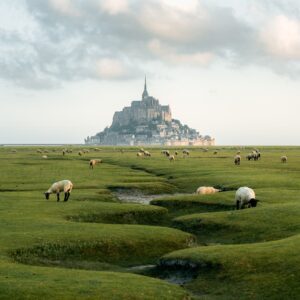
Simon Hechtbauer (@roamwithsimon): Best of the Week 32 at #nomadict
Simon shares the journey behind his photography, from early inspirations to field techniques, editing, and the story of the winning shot that shaped his path.

Miroslav Maršík (@miromarsik): Photographer based in Czech Republic
In this article, Miro shares how his love for cinematic music evolved into a deep passion for photography and how he uses light, color, and atmosphere to turn the streets of Prague into living film scenes.

Aurora photography panorama workflow: A guide to camera settings, editing, and color
In this article, Stefanie reveals how her background in physics sparked her passion for astrophotography and how she blends science with creativity to capture the beauty of the night sky. Readers will discover her approach to color, contrast, and editing, as well as her aurora photography workflow.

Yhabril (@yhabril): Best of the Week 33 at #nomadict
Spanish photographer Yhabril captures the profound connection between humans and the mountains that shaped him. Growing up in the Pyrenees, his work bridges outdoor sports, landscapes, and celestial scenes — often blending athletes, moonlight, and wilderness into striking visual stories.

Ariane Totzke (@besondersschwierig): Photographer based in Switzerland
In this article, Ariane shares how photography helped her navigate personal challenges, connect authentically with people and animals, and develop a philosophy rooted in empathy and artistic freedom. Readers will also discover her ethical approach to wildlife photography and her trusted equipment for both camouflage techniques and cameras.

How to photograph Dutch tulip fields: A guide to light, gear, composition, and colors
Discover how to photograph Dutch tulip fields in their most magical light. From choosing the right gear and lenses to mastering composition, color, and aerial perspectives, this guide shares creative techniques to capture the beauty of the Netherlands’ tulips. Learn how light, color grading, and proportion bring emotion into every frame.
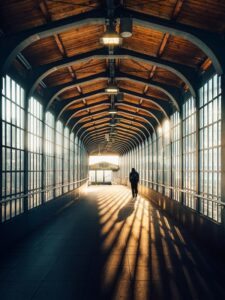
Cinematic city photography: An essential 6-step workflow
In this article, you’ll learn how to read and use light in your home city, choose the right technical settings for low-light scenes, and refine your editing workflow to shape color and atmosphere step by step. In addition, Dominik shares how to find fresh perspectives on familiar locations, five lessons that transformed his photography, and insights on the future of street photography.

Kyle van Bavel (@kylevanbavel): Photographer based in the Netherlands
Kyle van Bavel is a macro photographer with a distinctive, dreamy style that transforms the unseen details of nature into magical worlds. In this article, he shares how his unique vision, shaped by a journey of self-learning and overcoming dyslexia, has become his greatest creative strength.

